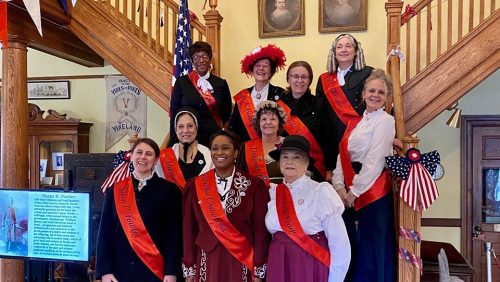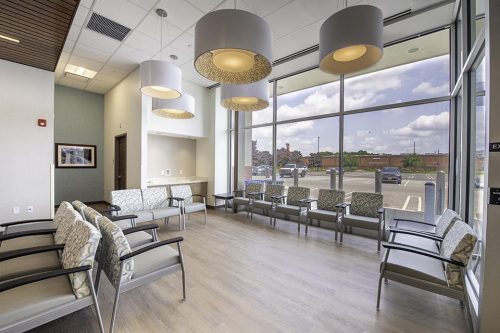Life for the Jewish emigres from Russia who founded the Alliance settlement in Cumberland County during 1882 began with modest accommodations. The 43 families that found their way to South Jersey spent the first year housed in Army tents provided by the U.S. War Department. According to Matthew E. Pisarski and Janet W. Foster’s article “The Jewish Settlement of South Jersey: Alliance and its Contemporaries,” in Down Jersey: From Bayshore to Seashore, this was followed in 1883 by the construction of “three large barracks” in which each family was “assigned a cubicle 8 feet by 14 feet.”
The first of the barracks to be constructed was dubbed Castle Garden by the settlers. The name was selected, according to Pisarski and Foster, because the families “likened their first weeks in the building to their crowded accommodations at Castle Garden, New York’s reception point for incoming immigrants…” In their new accommodations, the inhabitants “lived and ate communally.”
The barracks served as temporary homes as the settlers built their houses and began their work as farmers. Pisarski and Foster identify that each home, 12 feet by 14 feet with a height of 14 feet, “consisted of two rooms, a small attic and a cellar. For larger families, lean-tos were added on. The houses were lined with thin pine boards and plastered inside, but the settlers suffered from cold in winter and heat in summer.”
The homes of the Alliance families were built from wood cleared from the land on which they resided. It was cut at the sawmills owned by the Leach Brothers, from whom the Hebrew Emigrant Aid Society (HEAS) of New York City had purchased the land on which Alliance was founded. HEAS also covered the costs of the lumber for the homes in Alliance.
According I. Harry Levin’s 1978 Vineland Historical Magazine article “History of Alliance, New Jersey, First Jewish Agricultural Settlement in the United States,” the property designated for farming was divided into lots and numbered so that farmers selected their land through a lottery, in this case by randomly pulling from a hat containing slips of paper with each lot number.
By this point, the HEAS had been dissolved, its investment in Alliance having been sold to the Alliance Land Trust, which was determined to allow the farmers ownership of their land rather than have them work as part of a cooperative.
According to Levin, because the Alliance farmers were plying a new trade in the U.S. and lacked funds, they “received a deed and gave back a mortgage to Alliance Land Trust for $350, which included the land, a well and a two-room house (one room downstairs and one room upstairs).”
The inexperience of this new group of farmers meant that, as Pisarski and Foster point out, learning occurred through trial and error, “especially in their attempt to find the right crop choices for a soil that could be rather unforgiving.” Because crops such as potatoes, grapes, strawberries, lima beans, tomatoes and peppers did not rely on farm machinery or plow horses, they became the staple of the colony’s output.
At first, Alliance farmers were assisted by others in the area, some of whom provided “farm employment until they were self-sufficient in producing on their own farms,” Levin writes. Although the Alliance settlers overcame early hardships, it was difficult, according to Levin, “to do away with mosquitos, bugs, weeds, drought and too much rain.”
The residents of the colony would prevail despite the difficulties that beset them. According to Levin, the settlement earned a reputation for “good fruit, grain and vegetable farmers,” by producing “excellent crops that gave them a good name in the New York produce market” and turning the train depot established at Norma into “a bustling place of business” during summers and the fall harvest.
But at the end of 1883, with approximately 650 people living in the Alliance settlement, success wasn’t necessarily evident. In order to develop, Alliance discovered it needed to add industry to its agricultural base as well as places of worship and educational facilities to serve the needs of its growing population through the remainder of the 19th century.
Next Week: Growth









